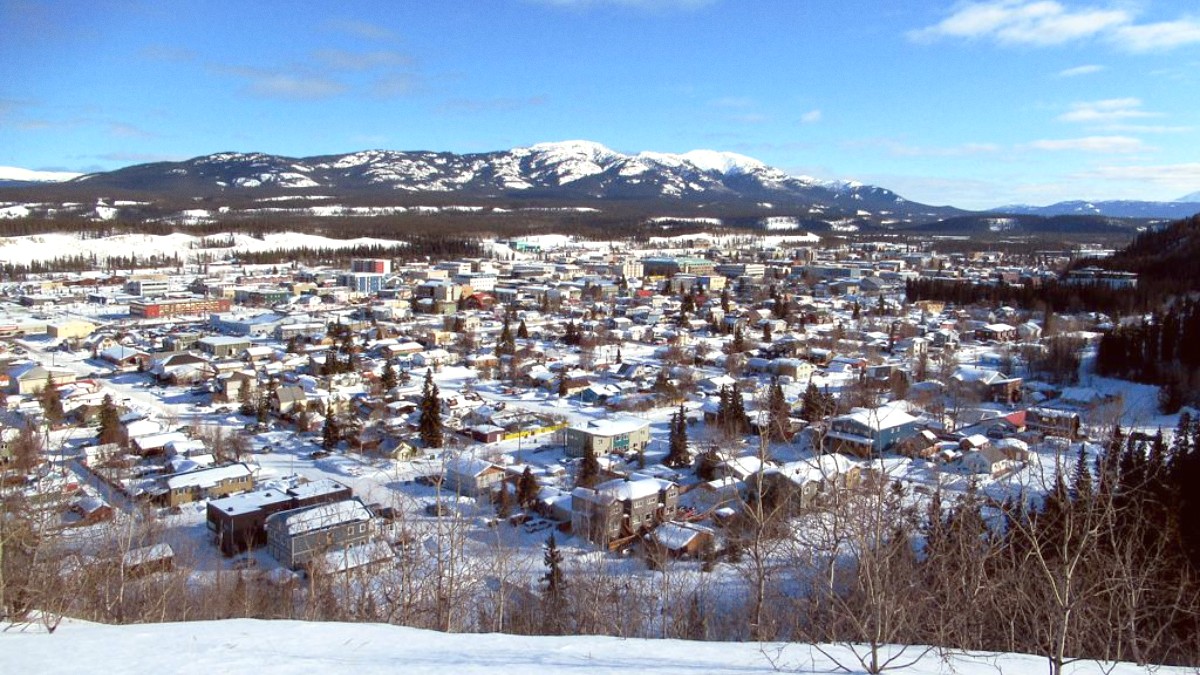
Yukon Territory, Canada
Whitehorse blends urban accessibility with wilderness proximity. Comfortable accommodations, diverse dining, and cultural attractions lie close to vast forests, winding rivers, and towering mountains. Gold Rush echoes mix with ancient First Nations stories. The city functions as a launchpad for adventure, be it outdoor exploration, a history deep dive, or aurora borealis magic. This guide offers details for planning your journey, from choosing the right visit time to packing for all seasons. It covers transportation, lodging, and local food. Recommendations for attractions, activities, and day trips showcase Yukon's best. Practical travel tips round out the knowledge for a truly memorable experience. Your adventure begins here.
The Whitehorse Trough's geographical factors create a distinct subarctic climate, differing from other northern Canadian regions.
This results in less precipitation compared to coastal areas, offering clear skies that attract aurora hunters and summer adventurers alike.
Whitehorse's history links tightly with the legendary Klondike Gold Rush of 1898. It stood as a major transportation hub for thousands of stampeders heading to Dawson City's goldfields. The city got its initial name, "White Horse," from the formidable Yukon River rapids. These rapids, now submerged by the Whitehorse Dam, resembled the flowing manes of white horses. This natural barrier made the area a necessary stop, forcing prospectors to portage supplies around the tumultuous water.
The White Pass and Yukon Route railway significantly influenced Whitehorse's growth. This narrow-gauge railway connected Skagway, Alaska, directly to Whitehorse. Its construction offered a much safer, more efficient way for goods and people to move inland, bypassing dangerous rapids and trails. The railway cemented Whitehorse's position as a logistical hub. From Whitehorse, sternwheelers continued the journey north along the Yukon River to Dawson City. In 1953, Whitehorse superseded Dawson City as Yukon's capital, reflecting its growing infrastructure and accessible location. The Alaska Highway construction during World War II further reinforced Whitehorse's strategic importance. This massive project brought soldiers to the region, creating a modern road linking the Yukon to North America. This highway transformed Whitehorse into a transportation and supply center for the northern region.
Klondike Gold Rush establishes Whitehorse as a transportation point.
White Pass & Yukon Route railway connects Skagway to Whitehorse.
Construction of the Alaska Highway further strengthens Whitehorse's role.
Whitehorse becomes the capital of Yukon, replacing Dawson City.
First Nations communities inhabit the land for millennia, long before European arrival.
The land around Whitehorse is a much older history, preceding the Gold Rush by thousands of years. First Nations, notably the Kwanlin Dün First Nation and Ta'a Kwäch'än Council, have resided in this area for millennia. Their rich cultural heritage, deep connection to the land, and traditional knowledge form a bedrock of the region's identity. Their stories, traditions, and enduring presence continue to shape the Yukon today.
Whitehorse serves as a place where ancient traditions and a spirited pioneering past converge, offering a compelling narrative for visitors to explore.
The Yukon River's rapids, resembling white horse manes, originally gave the city its name and forced early prospectors to portage, making it a natural stop.
Whitehorse is a living museum, where every street and landscape feature tells a story of perseverance, discovery, and deep cultural roots.
A quick look at Whitehorse provides a clear picture of this northern city:
The Whitehorse Census Agglomeration counted 28,218 people, with the City of Whitehorse itself recording 25,083 residents. This population size means Whitehorse functions as a true city, offering a range of services and amenities, yet it maintains a friendly, community-oriented atmosphere. You experience less of the overwhelming hustle found in larger metropolitan centers. The relatively small population allows for easier navigation and connecting with locals.
Whitehorse operates on Pacific Time (PT). During summer months, Yukon generally observes Daylight Saving Time, aligning with Pacific Daylight Time (PDT). This means Whitehorse is often on the same time as Vancouver and Seattle. Check current local time settings close to your travel dates, as seasonal observance can sometimes vary in the Yukon compared to other parts of Canada.
Canada's official languages, English and French, are both recognized here. English is the language spoken by the majority in Whitehorse. No language barrier exists if you speak English.
Whitehorse's economy relies on several main pillars: government services, mining, transportation, and general services. These sectors shape the job market and the types of businesses here.
A glimpse into riverboat history and its role in the Gold Rush era.
Stunning natural beauty with turquoise waters and basalt cliffs.
View northern animals in large, natural enclosures.
Late August to mid-April provides the best window, with peak viewing from December to March during the longest nights.
Dark, clear nights free from light pollution offer optimal conditions for seeing the aurora borealis.
Many local operators offer specialized Northern Lights tours, often including warm shelters and hot drinks.